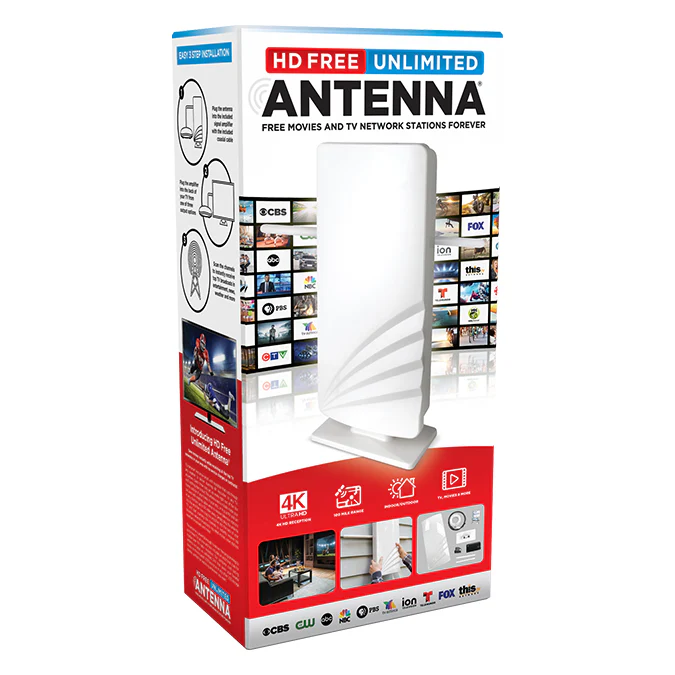In the era of digital streaming and high-definition television, having the right equipment is essential for maximizing your viewing experience. HD TV antennas have become increasingly popular as people seek to cut the cord on expensive cable subscriptions while still enjoying a variety of channels. This guide will explore everything you need to know about HD TV antennas, including their benefits, types, installation tips, and much more.
Understanding HD TV Antennas
HD TV antennas are devices that receive over-the-air television signals, allowing viewers to access various channels without a cable subscription. These antennas capture signals broadcasted by local television stations, which can include network channels such as ABC, CBS, NBC, and FOX. With an HD TV antenna, you can enjoy live television in high-definition quality, making it an attractive option for budget-conscious consumers.
Types of HD TV Antennas
There are several types of HD TV antennas available, each suited for different needs and preferences. Indoor antennas are compact and easy to install, making them perfect for urban dwellers with limited space. Outdoor antennas, on the other hand, are larger and often mounted on roofs or poles, providing better reception over longer distances. Additionally, there are amplified antennas that boost signal strength, ideal for areas with weak signals.
Benefits of Using an HD TV Antenna
One of the most significant advantages of using an HD TV antenna is the cost savings. With an antenna, you can access numerous free channels without paying for a cable subscription. Moreover, HD TV antennas deliver superior picture quality, often surpassing that of cable TV. This enhanced viewing experience can make a substantial difference, especially for sports enthusiasts and movie lovers.
How to Choose the Right HD TV Antenna
Selecting the right HD TV antenna involves considering various factors, including your location, the number of channels you want to receive, and your viewing habits. Start by checking the availability of broadcast signals in your area using online resources like the FCC’s DTV Map. This information can help you determine whether an indoor or outdoor antenna is best for you.
Installation Tips for HD TV Antennas
Installing an HD TV antenna can be straightforward if you follow a few essential tips. Begin by selecting the right location for your antenna. Ideally, place it near a window or on the roof, away from obstructions like trees and buildings. For indoor antennas, experiment with different placements to find the optimal reception. When mounting outdoor antennas, ensure they are securely fastened and follow the manufacturer’s instructions for installation.

Common Mistakes to Avoid
When setting up your HD TV antenna, avoid common mistakes that could hinder performance. One frequent error is placing the antenna in a location with obstructions, which can weaken the signal. Additionally, ensure that the antenna is not connected to any splitters or coaxial cables that could cause signal loss. Taking the time to set up your antenna correctly can significantly enhance your viewing experience.
Understanding Signal Range
Each HD TV antenna has a specific signal range, typically measured in miles. This range indicates how far the antenna can pick up signals from broadcast towers. To maximize your reception, choose an antenna with a range that exceeds the distance to the nearest broadcast tower. Remember that terrain, obstructions, and weather conditions can all affect signal strength.
Amplified vs. Non-Amplified Antennas
When choosing an HD TV antenna, you may encounter amplified and non-amplified options. Amplified antennas come with a built-in signal booster that enhances weak signals, making them suitable for areas with limited reception. Non-amplified antennas, while often more affordable, may struggle in low-signal environments. Assess your location’s signal strength before making a decision on which type to purchase.
Connecting Your HD TV Antenna
Once you have your HD TV antenna installed, the next step is to connect it to your television. Use a coaxial cable to link the antenna to your TV’s antenna input. After connecting, run a channel scan on your television to detect available channels. This process may take a few minutes, but it will provide you with a comprehensive list of channels you can access.
Channel Scanning and Adjustment
After connecting your HD TV antenna, performing a channel scan is crucial to find available channels. Most modern televisions have a channel scan feature in their menu settings. If you notice that certain channels are missing or have poor reception, try adjusting the antenna’s position or angle. Small adjustments can make a significant difference in signal quality.
Maintaining Your HD TV Antenna
Regular maintenance of your HD TV antenna ensures optimal performance. For outdoor antennas, inspect them periodically for any damage or wear, especially after severe weather conditions. Clean the antenna and its connections to prevent dust and debris from affecting signal reception. Indoor antennas may also need occasional repositioning based on changes in the environment.
Troubleshooting Common Issues
If you experience reception issues with your HD TV antenna, several troubleshooting steps can help. First, check all cable connections to ensure they are secure. If channels are missing, perform another channel scan. If reception remains poor, consider relocating the antenna to a different spot or upgrading to a more powerful model.

Exploring Streaming Alternatives
While HD TV antennas provide access to free channels, many viewers also consider streaming services as an alternative to traditional cable. Streaming platforms offer a vast array of content, including movies, TV shows, and live sports. Combining an HD TV antenna with a streaming service can provide a comprehensive entertainment solution, allowing you to enjoy the best of both worlds.
Conclusion: Embracing the HD TV Antenna Revolution
Investing in an HD TV antenna can significantly enhance your viewing experience while saving you money on cable subscriptions. With the variety of options available, there’s an antenna to suit every need. By following the tips and insights in this guide, you can make informed decisions about your HD TV antenna setup, ensuring that you enjoy high-quality, over-the-air television for years to come.
FAQs
What channels can I receive with an HD TV antenna?
With an HD TV antenna, you can receive a variety of local channels, including major networks like ABC, CBS, NBC, FOX, and PBS. The exact channels available depend on your location and the antenna’s range.
Do I need a special TV to use an HD TV antenna?
No, you don’t need a special TV. Most modern TVs have built-in tuners that can receive over-the-air signals. However, if you have an older TV without a digital tuner, you may need a digital converter box.
How do I know which HD TV antenna to buy?
To determine the best HD TV antenna for your needs, check the broadcast signal availability in your area using online tools like the FCC’s DTV Map. This will help you choose an antenna with an appropriate range.
Can I use an HD TV antenna indoors?
Yes, many people successfully use indoor HD TV antennas, especially in urban areas. However, outdoor antennas typically provide better reception, especially in rural or suburban locations.
What should I do if I experience signal loss?
If you experience signal loss, check all connections to ensure they are secure. You may also need to adjust the antenna’s position or perform a channel scan on your TV to refresh the available channels.



